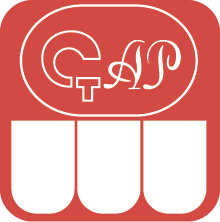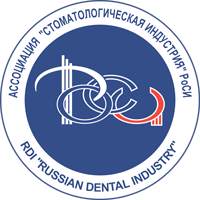DOI:
10.37988/1811-153X_2025_1_116Evaluation of the diagnostic capability of a trained neural network model in dentistry
Downloads
Abstract
The development of neural networks is an urgent task in the modern practice of a dentist due to the need to achieve high rates of interpretation of X-ray images, reduce the time for processing primary medical documentation, and reduce subjective assessment in the diagnosis of dental diseases. The aim of the work is to evaluate the diagnostic possibilities of interpreting X-ray images in dentistry using a trained neural network model.Materials and methods.
The study included 300 OPTG patients who had at least 5 teeth without taking into account their group affiliation. The images were randomly divided into 3 groups: I — 200 images for training the neural network model, II — 50 images for monitoring the model during training, III — 50 images for manual marking by dentists (comparison group). Five available “You Only Look Once” v8 neural network models with open source code and different floating-point operation speeds were selected for training: 12, 42, 110, 220 and 344 Gflops. Each model was trained for 5,000 epochs with the registration of intermediate variants of the trained model every 100 epochs.
Results.
The use of neural networks in the tasks of determining various X-ray contrast structures at the optical imaging laboratory identifies objects with an accuracy of 0.98, provided there are a sufficient number of objects in the training sample. An increase in the number of training epochs increases the quality of detection of each object (0.875) and its segmentation (0.947) to peak values by 2500 epochs and becomes almost unchanged with further training. An increase in the model’s performance parameter is advisable to values of 42 Gflops, a further increase in the indicator did not reveal diagnostic value. In comparison with dentists, the neural network showed a significant increase in the processing speed of a single image, about 25 times faster than a human, and the quality of detection by doctors is 1% better, but a greater contribution to the error was made by objects requiring an increase in the training sample, which once again confirms the need for proper formation of the training dataset.
Conclusion.
The use of a neural network with a trained model for the detection and interpretation of X-ray images in dentistry has shown high diagnostic value. For the conditions for defining and segmenting objects, it is advisable to use models of such sizes that allow processing objects with a high degree of confidence. A prerequisite for achieving high results is a sufficient training sample, which contributes to improving the quality of detection of objects and their boundaries in X-ray studies.
Key words:
neural network model in dentistry, object detection, orthopantomogramFor Citation
[1]
Shkarin V.V., Makedonova Yu.A., Iarygina E.N., Veisgeim L.D., Dyachenko D.Yu., Gavrikova L.M. Evaluation of the diagnostic capability of a trained neural network model in dentistry. Clinical Dentistry (Russia). 2025; 28 (1): 116—123. DOI: 10.37988/1811-153X_2025_1_116
References
- Kazarian G.G., Bekreev V.V., Ivanov S.Yu., Oborotistov N.Yu., Gusarov A.M., Khlystova T.V., Ivanova I.V., Soloshenkov P.P., Tsay P.A., Kibardin I.A. Possibilities of ultrasound diagnostics and the use of artificial neural network to assess the morphology and size of the articular disc of the temporomandibular joint. Clinical Dentistry (Russia). 2024; 1: 54—59 (In Russian). eLIBRARY ID: 63433208
- Muraev A.A., Guseynov N.A., Tsay P.A., Kibardin I.A., Burenchev D.V., Ivanov S.S., Oborotistov N.Yu., Matuta M.A., Grachev N.S., Larin S.S. Artificial neural networks in dental and maxillofacial radiology: a review. Clinical Dentistry (Russia). 2020; 3 (95): 72—80 (In Russian). eLIBRARY ID: 44008071
- Lin C., Huang Y., Wang W., Feng S., Feng S. Lesion detection of chest X-Ray based on scalable attention residual CNN. Math Biosci Eng. 2023; 20 (2): 1730—1749. PMID: 36899506
- Yu G., Sun K., Xu C., Shi X.H., Wu C., Xie T., Meng R.Q., Meng X.H., Wang K.S., Xiao H.M., Deng H.W. Accurate recognition of colorectal cancer with semi-supervised deep learning on pathological images. Nat Commun. 2021; 12 (1): 6311. PMID: 34728629
- Rogatskin D.V., Geletin P.N. Optimization of the algorithm for intraoral radiography of multi-rooted teeth on the example of the first maxillary molars and mandibular molars with radix entomolaris. Part 1. Clinical Dentistry (Russia). 2023; 2: 16—23 (In Russian). eLIBRARY ID: 54167521
- Levan’kov B.V., Vyborov E.M., Yakovenko N.I. Medical decision-making support system based on bayesian networks in medical diagnostics. Russian Military Medical Academy Reports. 2020; 4: 39—43 (In Russian). eLIBRARY ID: 48033883
- Shanina A.I. The use of artificial intelligence in dentistry. International Research Journal. 2023; 6 (132): (In Russian). eLIBRARY ID: 54052633
- Guefrechi S., Jabra M.B., Ammar A., Koubaa A., Hamam H. Deep learning based detection of COVID-19 from chest X-ray images. Multimed Tools Appl. 2021; 80 (21—23): 31803—31820. PMID: 34305440
- Ranjbarzadeh R., Bagherian Kasgari A., Jafarzadeh Ghoushchi S., Anari S., Naseri M., Bendechache M. Brain tumor segmentation based on deep learning and an attention mechanism using MRI multi-modalities brain images. Sci Rep. 2021; 11 (1): 10930. PMID: 34035406
- Rogatskin D.V., Geletin P.N. Optimization of the algorithm for intraoral radiography of multi-rooted teeth on the example of the first maxillary molars and mandibular molars with radix entomolaris. Part 2. Clinical Dentistry (Russia). 2023; 3: 6—13 (In Russian). eLIBRARY ID: 54509002
- Kolesnichenko O.Yu., Martynov A.V., Pulit V.V., Kolesnichenko Yu.Yu., Shakirov V.V., Varlamov O.O., Minushkina L.O., Sotnik A.Yu., Zhilina T.N., Dorofeev V.P., Smorodin G.N., Zhaparov M.K., Mazelis L.S. Modern advanced artificial intelligence for smart medicine. Remedium. 2019; 4: 36—43 (In Russian). eLIBRARY ID: 37532436
- Korenevsky N.A., Aksenov V.V., Rodionova S.N., Gontarev S.N., Lazurina L.P., Safronov R.I. Method of Complex Assessment of the Level of Information Content of Classification Features in the Conditions of Fuzzy Data Structure. Proceedings of the Southwest State University. Series: IT Management, Computer Science, Computer Engineering. Medical Equipment Engineering. 2022; 3: 80—96 (In Russian). eLIBRARY ID: 49725204
Downloads
Received
June 30, 2024
Accepted
February 14, 2025
Published on
April 7, 2025









